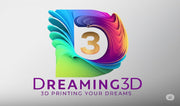Exploring the Nexus of Virtual Reality and 3D Printing: A Revolution in the Making
In the ever-evolving landscape of technology, two innovations stand out as catalysts for transformation: virtual reality (VR) and 3D printing. Both have surged in popularity and application over recent years, reshaping industries and pushing the boundaries of what is possible. Yet, their true potential lies not just in their individual capabilities, but in the synergy that arises when they intersect.
Virtual reality, with its immersive environments and interactive experiences, has captured the imagination of millions worldwide. From gaming and entertainment to education and training, VR has found its way into diverse fields, offering new ways to engage, learn, and create. Meanwhile, 3D printing, once a niche technology, has become increasingly accessible and versatile, empowering individuals and businesses to materialize their ideas with unprecedented speed and precision.
At first glance, VR and 3D printing may seem like distinct technologies with little overlap. However, a closer look reveals a symbiotic relationship waiting to be explored. One of the most exciting intersections lies in the realm of prototyping and product development. Traditionally, designers and engineers would create physical prototypes through iterative processes, often involving costly materials and time-consuming adjustments. With VR, this paradigm shifts dramatically.
Imagine stepping into a virtual workshop, where ideas come to life with a wave of your hand. Designers can sculpt and manipulate virtual models in real-time, experimenting with form, function, and aesthetics with unparalleled freedom. Once a design is finalized in the virtual space, it can seamlessly transition to the realm of 3D printing, where it takes on tangible form.
Here's where the magic truly happens. 3D printing enables rapid prototyping at a fraction of the time and cost of traditional methods. Complex geometries that were once prohibitively difficult to manufacture can now be realized with ease. Moreover, the iterative nature of both VR and 3D printing allows for quick feedback loops, accelerating the design process and fostering innovation.
Beyond prototyping, VR and 3D printing converge in the realm of customization and personalization. In a world where mass production reigns supreme, the ability to create bespoke products tailored to individual needs and preferences is a game-changer. Whether it's custom-fit prosthetics, personalized fashion accessories, or intricately designed home decor, the marriage of VR design and 3D printing manufacturing offers endless possibilities for self-expression and creativity.
Furthermore, the combination of VR and 3D printing has profound implications for education and training. VR simulations provide immersive learning environments where students can explore complex concepts and scenarios in a safe and controlled manner. By coupling VR simulations with 3D-printed models, learners can bridge the gap between virtual and physical, gaining hands-on experience that transcends traditional teaching methods.
Of course, like any technology, the convergence of VR and 3D printing is not without its challenges. Issues such as cost, accessibility, and technical complexity remain hurdles to widespread adoption. However, as both technologies continue to evolve and mature, these barriers are steadily being overcome, paving the way for a future where virtual and physical worlds seamlessly intertwine.
In conclusion, the intersection of virtual reality and 3D printing represents a convergence of creativity, innovation, and possibility. Together, they form a powerful toolkit for envisioning, designing, and creating the world of tomorrow. Whether it's revolutionizing product development, enabling personalized experiences, or transforming education, the nexus of VR and 3D printing is poised to shape the future in ways we can only begin to imagine.
